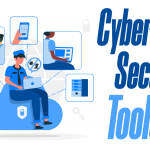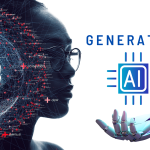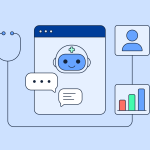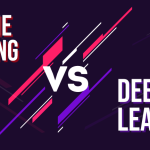AI chatbots are revolutionizing how businesses and individuals interact online. From handling customer support queries to acting as personal assistants, chatbots can save time, improve engagement, and boost efficiency.
If you’ve ever wanted to build your own chatbot whether for your website, app, or research project this guide will walk you through every step. You’ll learn about the tools, technologies, and frameworks involved, along with practical tips for creating an intelligent chatbot that truly understands users.
Table of Contents
Step 1: Understand What an AI Chatbot Is
An AI chatbot is a computer program that uses Natural Language Processing (NLP) and Machine Learning (ML) to simulate human-like conversations. Unlike simple rule-based bots that follow predefined scripts, AI-powered bots can understand intent, respond contextually, and learn from user interactions over time.
Common examples include of AI Chatbot are:
- ChatGPT by OpenAI – a conversational AI model for natural discussions.
- Google Bard / Gemini – for creative and factual responses.
- Replika – an emotional support chatbot that learns about the user’s personality.
AI chatbots are built using a combination of backend logic, NLP libraries, APIs, and a conversational flow design.
Step 2: Choose the Type of AI Chatbot You Want to Build
Before starting development, decide what kind of chatbot fits your goal:
- Rule-Based Chatbot:
Works with predefined commands or decision trees. Simple but limited.
Example: FAQ or support bot with fixed answers. - AI-Powered Chatbot:
Uses NLP and ML to understand text, detect sentiment, and respond dynamically.
Example: Virtual assistants or learning bots.
For most modern applications, you’ll want to build an AI chatbot using NLP and ML techniques.
Step 3: Select a Platform or Framework
You can either build from scratch or use existing frameworks that simplify development.
Popular Chatbot Frameworks & Tools:
- Dialogflow (Google Cloud): Easy for beginners, supports voice and text.
- Microsoft Bot Framework: Powerful for enterprise-level bots.
- Rasa: Open-source framework for developers who want full control.
- OpenAI API (GPT Models): For intelligent conversational capabilities.
If you want complete customization, Python is an excellent language for building chatbots from scratch. It supports libraries like NLTK, spaCy, and Transformers for NLP.
Step 4: Set Up the Development Environment
Here’s how to get started with a Python-based chatbot:
- Install Python 3.x from python.org.
- Set up a new project folder and create a virtual environment:
python -m venv chatbot_env source chatbot_env/bin/activate # (or chatbot_env\Scripts\activate on Windows) - Install dependencies:
pip install nltk spacy transformers torch - Download NLP models:
python -m spacy download en_core_web_sm
You now have the basic tools needed to process language and train your model.
Step 5: Design the Conversation Flow
Even intelligent bots need structure. Before coding, outline your chatbot’s purpose and user journey.
For example:
- Greeting message → “Hi! How can I help you today?”
- Detect user intent → “I want to know my account balance.”
- Action → Connect to database or API → Respond with data.
You can use flowchart tools like Draw.io or Botpress to visualize the dialogue structure.
Step 6: Implement Natural Language Understanding (NLU)
The NLU component helps your chatbot interpret what the user is saying. This includes:
- Intent Recognition: What the user wants (e.g., “check balance”).
- Entity Extraction: Important data like names, dates, or numbers.
- Context Management: Remembering what was said earlier.
Here’s a simple example using spaCy:
import spacy
nlp = spacy.load("en_core_web_sm")
def get_entities(text):
doc = nlp(text)
for ent in doc.ents:
print(ent.text, ent.label_)
get_entities("Book a flight to Dubai next Friday")
This identifies “Dubai” as a location and “next Friday” as a date both useful for your chatbot’s logic.
Step 7: Train or Connect a Language Model
You can train your own ML model, but most developers now use pre-trained models for better accuracy.
For example, using OpenAI’s API (ChatGPT models):
import openai
openai.api_key = "YOUR_API_KEY"
response = openai.ChatCompletion.create(
model="gpt-3.5-turbo",
messages=[{"role": "user", "content": "Hello, chatbot!"}]
)
print(response["choices"][0]["message"]["content"])
This connects your bot to GPT for smart, human-like replies.
If you want to avoid paid APIs, Rasa and Hugging Face Transformers provide free, local models.
Step 8: Integrate with a Frontend or App
You can deploy your chatbot on multiple platforms:
- Web App: Use Flask or FastAPI with HTML/CSS/JavaScript.
- Mobile App: Integrate with Flutter or React Native.
- Messaging Platforms: Connect to WhatsApp, Telegram, or Facebook Messenger via APIs.
For a website, Flask integration looks like this:
from flask import Flask, request, jsonify
app = Flask(__name__)
@app.route("/chat", methods=["POST"])
def chat():
user_message = request.json.get("message")
response = get_chatbot_reply(user_message)
return jsonify({"reply": response})
Step 9: Test and Improve
Once your chatbot is functional, test it extensively:
- Does it understand slang or spelling mistakes?
- Does it remember past context?
- Are the responses relevant?
Collect user feedback and retrain the model regularly to enhance accuracy.
Step 10: Deploy and Monitor
Finally, host your chatbot using cloud platforms like:
- Render / Heroku (for free small apps)
- Google Cloud / AWS / Azure (for scalable enterprise bots)
Use analytics to monitor usage and response quality. Continuous improvement is key to maintaining user satisfaction.
Final Thoughts
Building your own AI chatbot from scratch is a rewarding project that blends programming, linguistics, and machine learning. Whether you’re creating a personal assistant, customer service agent, or educational tutor, the process teaches you valuable skills in NLP, data handling, and AI design.
Start small create a simple text-based chatbot using Python, then expand with APIs and UI integration. With powerful tools like OpenAI, Rasa, and Dialogflow, building intelligent conversational agents has never been easier.
Also Check Machine Learning vs Deep Learning – Explained for Free 2025











1 thought on “How to Build AI Chatbot from Scratch – Ultimate Guide 2025”